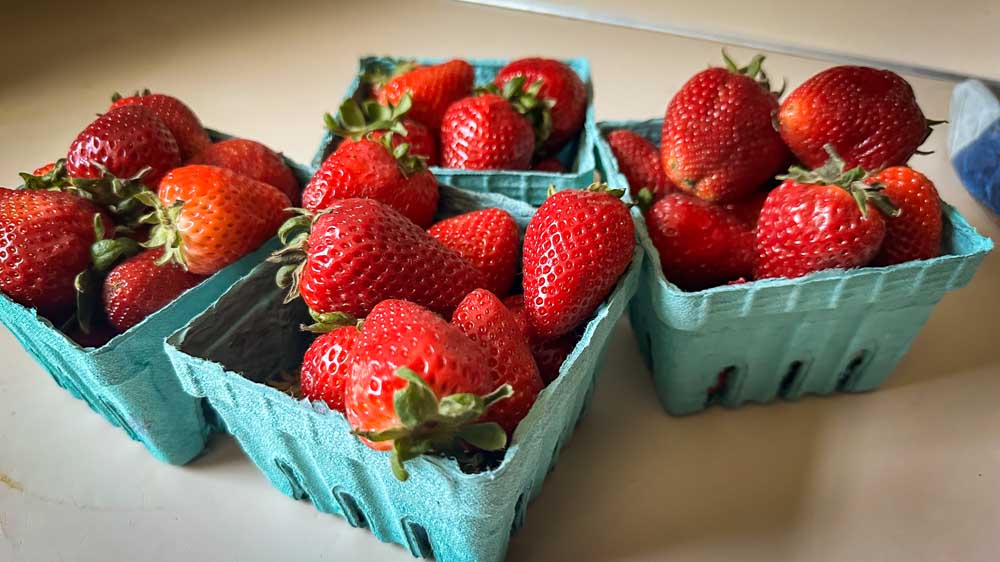Oregon’s strawberry industry continues to shrink
Published 9:15 am Tuesday, May 21, 2024

- May through July is strawberry season in Oregon. The state's strawberry crop is shrinking.
Oregon’s strawberry fields look promising this spring, but they aren’t forever for one major grower, processor and distributor.
Townsend Farms in Fairview is retreating from strawberries in Oregon.
Trending
“Our farm, after 40 years, planted their last strawberry field this year,” Derek Peacock of Townsend Farms said during an Oregon Strawberry Commission meeting May 16 on Zoom. Peacock described the difficult decision the company made during the offseason.
Townsend Farms represents about a third of Oregon’s strawberry volume, Peacock said. He added that the company told its outside grower base — about six or seven farmers representing roughly 1 million pounds — that it will no longer accept local strawberries after the 2025 crop.
Some of those growers want to continue farming strawberries, but others are getting out due to the economics of the fruit.
Peacock didn’t respond to a request for further comment. Calls to Townsend Farms weren’t returned.
Strawberry economics
Oregon strawberries are known for their deep red color and high sugar content. But their juicy nature makes them hard to store and transport fresh, as there’s more potential for mold.
Trending
As a result, about 97% of Oregon’s crop goes to the processed side of the market, said Eric Cope, Willamette Valley Fruit Co. fruit procurement manager and strawberry commission member. California and foreign countries sell into the fresh market first, and anything left over is processed.
“It’s a byproduct for them. They’re fine with selling that at a ridiculously low price,” said Julie Pond, executive director of the Northwest Berry Foundation.
California produces about 90% of U.S. strawberries. The price differential from the Golden State and foreign growers has led to soft demand for Oregon’s higher quality fruit, experts said.
Lately, that’s combined with problems such as the rising costs of inputs and labor.
Still, Oregon strawberries have been declining for decades. In 2004, the harvest was about 25 million pounds, Cope said. It was 7 million in 2023.
Room for growth
Cope and Pond said there’s room for growth in selling fresh berries locally and encouraging residents to visit farm stands and farmers markets.
“It’s more important than ever for people to know where their food is coming from,” Pond said.
Cope said educating consumers and building demand based on the flavor of Oregon strawberries — whether fresh, frozen or in jams — is the crux of the matter.
“It’s one of the best strawberries you can buy. People just need to get out there and try some,” he added.
Pond said that strawberries will remain a strong presence in the Pacific Northwest.
Last year’s Oregon strawberry harvest was small due to hot weather that put a pause on the crop, Cope said. This year, it should return to 9 million pounds, about the same as the 2022 production. And harvest is on schedule for June 1 in Oregon and Washington.
“It looks like it’s going to be a good size from everything we can tell so far in terms of bloom, pollination and weather,” Cope said.
Oregon’s had 1,853 acres of strawberries, according to the USDA’s 2022 Census of Agriculture. That figure was down 17% from 2017.
Washington doesn’t have a strawberry commission. That organization was terminated in 2018 due to a lack of interest from growers and declining production.
In 2019, Townsend Farms was part of an unsuccessful effort to disband the Oregon Strawberry Commission, Pond said.
California’s strawberry crop looking strong this year
Northwest cherry industry hopes for better year
Blueberry council hopes to get a boost from pro pickleball
Northwest blueberry industry hopes for rebound
California table grape acreage dips slightly
California wine grape acreage dips in 2023, could plummet in 2024








